|
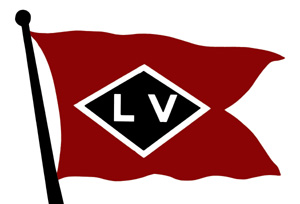
|
Roselle Park
The Connection
with the
Lehigh Valley Railroad
(Later
Conrail &
NJT) |

| |
|
|
The Rahway Valley Railroad's interchange with the
Lehigh Valley Railroad (LV) was a vital connection that the RVRR
depended on for many years. The connection was originally forged
between the LV and the New York & New Orange Railroad in 1898.
The LV itself had only been
constructed through the area a few years prior to the NY&NO
coming to be. The LV's extension to Newark and Jersey City was
constructed in five phases. To construct these portions the LV
formed five subsidiary corporations, the Roselle & South
Plainfield Railway, the Newark & Roselle Railway, the Jersey
City & Western Railway, the Greenville & Hudson Railway, and
the Jersey City Terminal Railway. The portion of the LV line that
the NY&NO (and later RVRR) connected to was the Newark &
Roselle Railway, which was opened in February of 1891.
At least on two occasions the
Lehigh Valley Railroad expressed interest in purchasing the Rahway
Valley Railroad. The LV first expressed interest c.1902-1905 when
the railroad was still operated as the New Orange Four Junction
Railroad. The second time the LV expressed interest in purchasing
the Rahway Valley Railroad was in 1928. On both occasions the LV
commissioned studies and reports, but in the end decided against
purchasing the railroad both times. The LV determined it was already
getting as much revenue out of the railroad as possible. This connection remained vital for the little
Rahway Valley, even after the LV was absorbed into Conrail in 1976.
The interchange yard was even upgraded to heavier rail in the late
1970's. Only after the RVRR was purchased by the Delaware Otsego
Corporation did the interchange close. The DO, in an effort to
consolidate operations with its Staten Island Railroad, moved the
RVRR's primary interchange to the former Jersey Central interchange
at Aldene. The former LV interchange was closed in April of 1988,
the track eventually torn up
. |
See
Also:
The
Diamond
|
|
Early Roselle Park
The New Orange Railroads Making Connections
|
|
REFER TO MAP 5B FOR TRACK
ARRANGEMENTS |
|
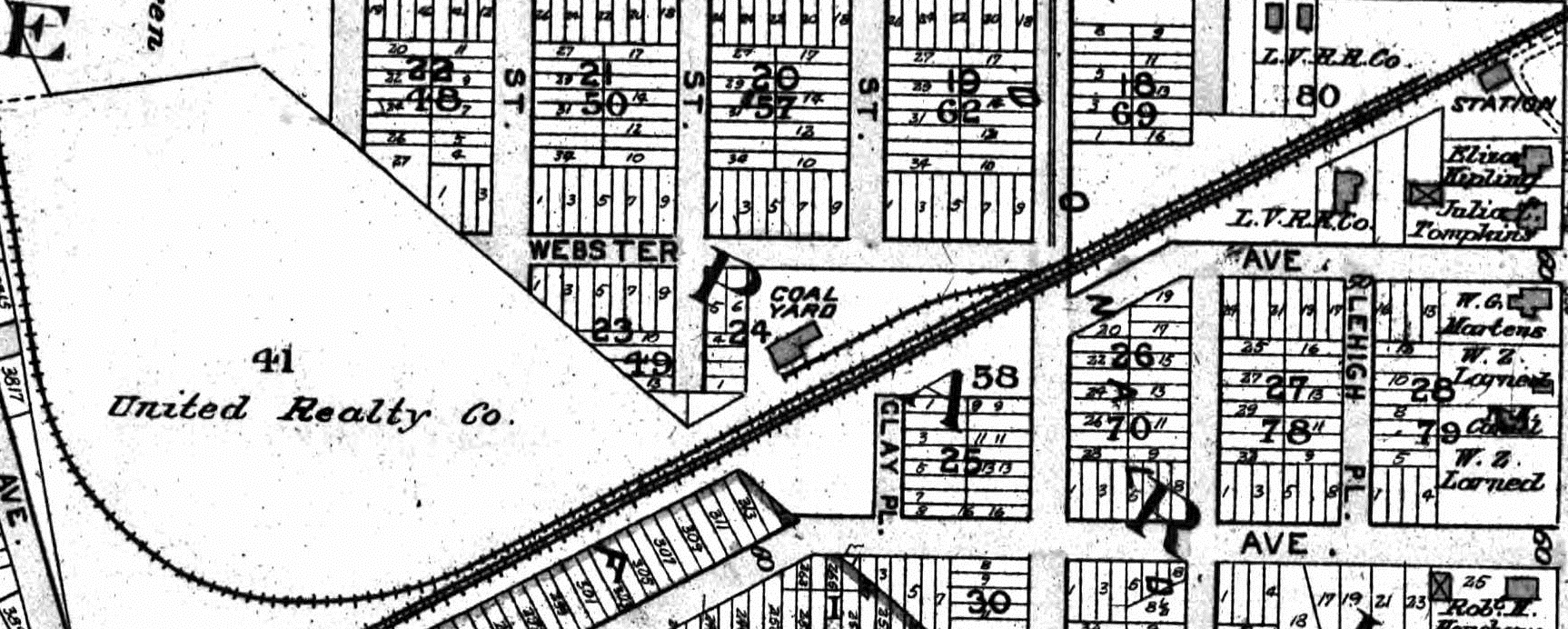 |
|
This 1906 map shows how
simple the track layout was at the LV/RV interchange early on.
Missing from the map is the crossover, connecting the interchange
track and the LV mainline. |
|
The New York & New Orange Railroad
constructed its Lehigh Valley
Branch in c.1897-1898 to connect with the Lehigh Valley Railroad (LV) at Roselle
Park (see next paragraph regarding town name). Interestingly, the LV
constructed a short spur to connect with the NY&NO. The LV
tracks extended to just a few rail lengths past the W. Webster Ave. grade
crossing.
At the time
of the NY&NO's construction, Roselle Park, as a municipality,
was not yet in existance. This area remained a part of Township of Union until March 22, 1901,
when the Borough of Roselle
Park was created. The area of Roselle Park had utilized the
Roselle Post Office prior to 1901, rather than the more distant
Union Post Office. The Borough of
Roselle had been carved out of Elizabeth in
1894.
The earliest
interchange yard here was a rather simple one. A single track ran
paralleled the grade level two-track LV mainline from west of Locust
Street, all the way to a terminus along Chestnut Street at the
freight house. There was a single crossover between the interchange
track and a track of the LV mainline.
The
NY&NO became the New Orange Four
Junction Railroad in 1901. Interchange movements at Roselle
Park remained considerably light. Only 1,110 tons of freight
were interchanged here in 1900, but spiked to 7,243 tons in
1901 due to factories being constructed in New Orange. The Lehigh
Valley grossed $912.00 in October, 1901 and $974.00 from freight
interchanged here.
The NOFJ was
consolidated with the newly formed Rahway Valley Railroad in 1905. With
increasing freight being moved over the RVRR, more freight was
interchanged with the LV. The former one track interchange grew to
three tracks by 1915. |
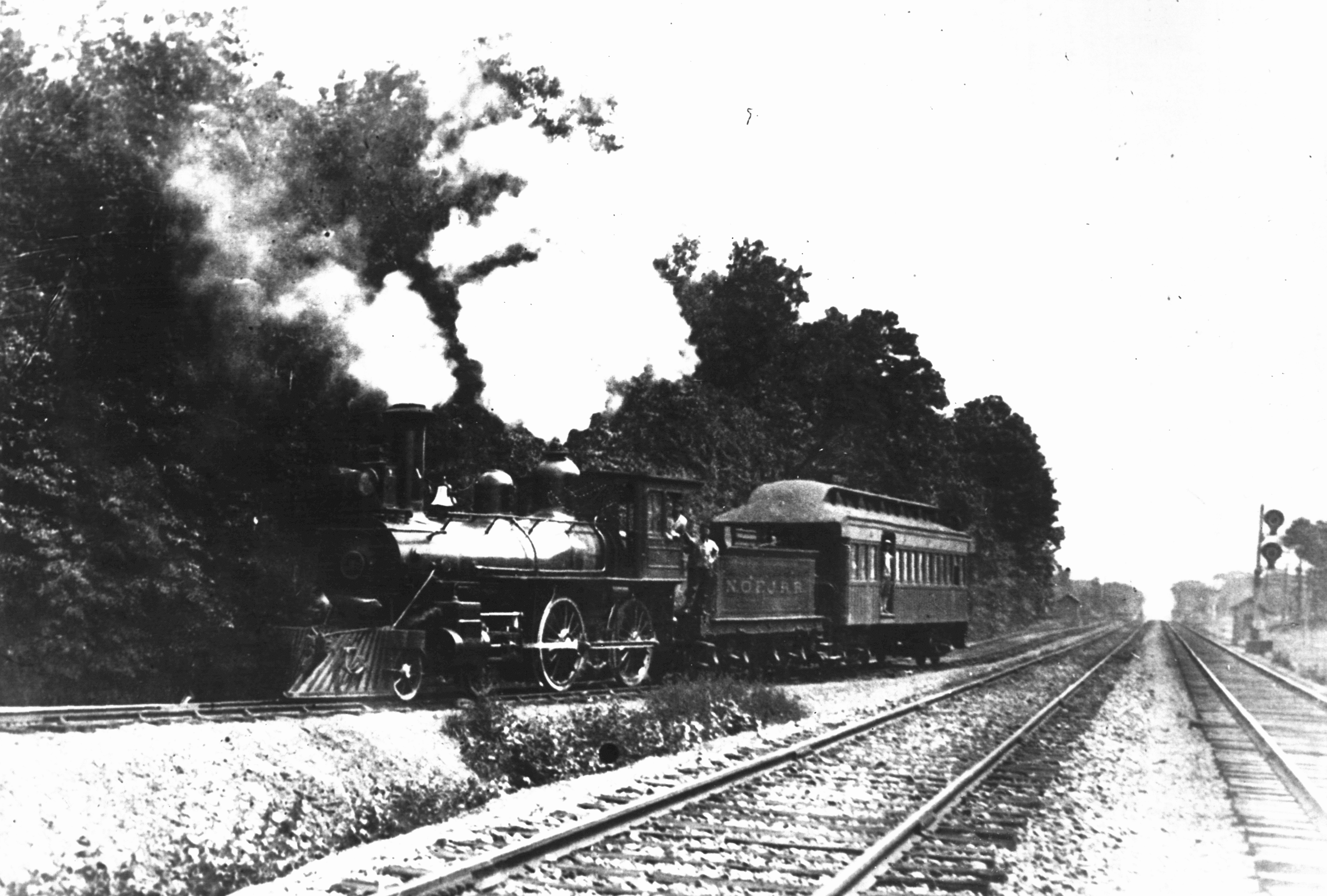 |
| In this very early view, c.1901-1905, we
see NOFJ #3 and her lone combine leaving the Lehigh Valley Railroad
interchange and heading toward Kenilworth/New Orange. At this time,
and for decades after, the Lehigh Valley was a level, at grade,
route through this area. Only years later was the line elevated, as
it is today. Springfield
Public Library. |
|
FREIGHT INTERCHANGED BETWEEN THE
LEHIGH VALLEY
RAILROAD AND THE NEW ORANGE FOUR JUNCTION RAILROAD
AT ROSELLE [PARK], N.J., FOR THE FISCAL YEARS
ENDING NOV. 30, 1900 AND NO. 30, 1901. |
|
Year ending Nov. 30,
1900 |
Year ending Nov. 30,
1901 |
|
|
From
L.V.R.R.
(in tons) |
To L.V.R.R.
(in
tons) |
Total
(in
tons) |
From
L.V.R.R.
(in tons) |
To L.V.R.R.
(in
tons) |
Total
(in
tons) |
|
December |
25 |
145 |
170 |
34 |
1 |
35 |
|
January |
96 |
166 |
258 |
55 |
1 |
56 |
|
February |
4 |
6 |
10 |
190 |
10 |
200 |
|
March |
4 |
9 |
13 |
108 |
15 |
123 |
|
April |
10 |
9 |
19 |
774 |
37 |
811 |
|
May |
29 |
8 |
37 |
1,396 |
48 |
1,444 |
|
June |
8 |
5 |
13 |
1,609 |
27 |
1,636 |
|
July |
52 |
5 |
57 |
715 |
34 |
749 |
|
August |
102 |
1 |
103 |
774 |
55 |
829 |
|
September |
136 |
1 |
137 |
490 |
159 |
649 |
|
October |
70 |
122 |
192 |
232 |
117 |
349 |
|
November |
101 |
0 |
101 |
189 |
173 |
362 |
|
Total for Fiscal
Year |
633 |
477 |
1,110 |
6,566 |
677 |
7,243 | |
|
|
The Two Valley Roads
The Rahway Valley & Lehigh Valley Connection:
1904-1967 |
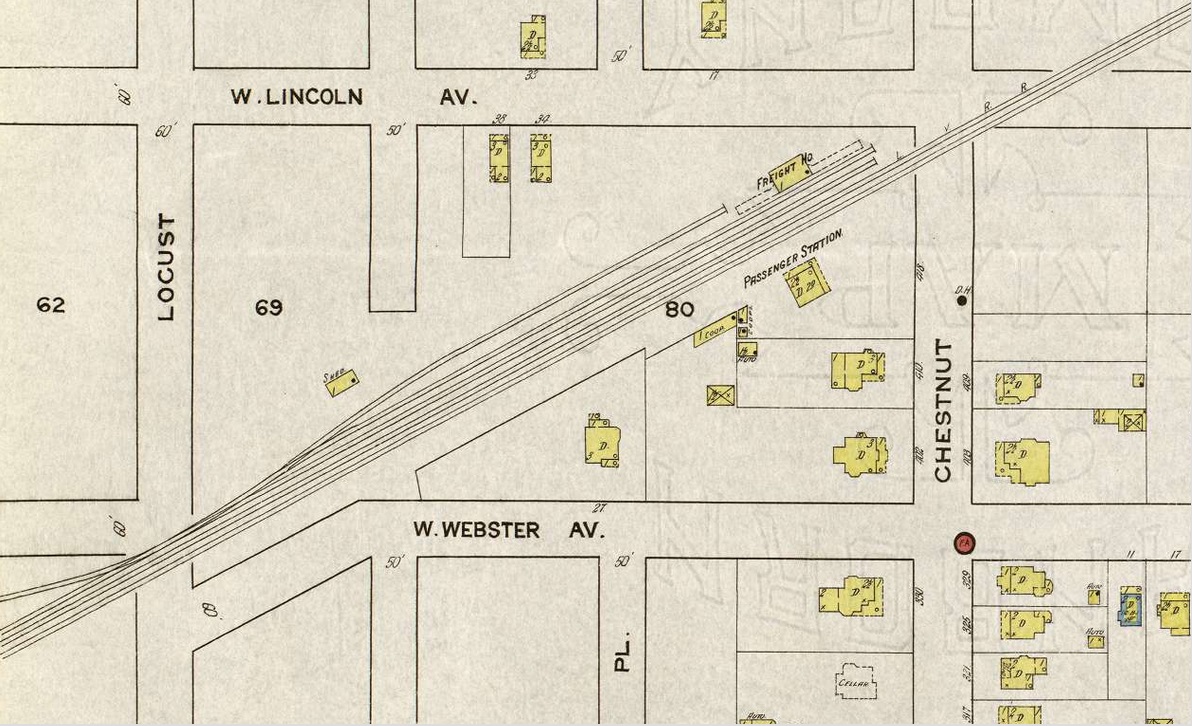
|
| This
Sanborn map shows the RV/LV interchange yard in 1915. Rahway Valley
trains entered the interchange yard on a single track further west
than the view this map gives. The track splayed into a three track
interchange yard that terminated at the Freight House on Chestnut
Street. The freight house is now the location of the parking lot for
the current Roselle Park train station. The original Lehigh Valley
Roselle Park train station sat opposite the tracks from the freight
house. The two southern tracks are the grade-level Lehigh
Valley mainline, they were elevated much later
on. |
During the era of the
Rahway Valley Railroad, and before theAldene Plan was implemented,
the RV/LV interchange tracks extended all the way to Chestnut Street
in Roselle Park, where they terminated at the freight house
immediately across from the passenger station.
Rahway
Valley trains would enter the Yard Limits just south of the
W. Webster Ave.grade crossing. Thence
trains headed along a single track until reaching Locust Street,
after that grade crossing the one track splayed into a three
track interchange yard (between Locust and Chestnut Streets) where
the Rahway Valley delivered and received carloads with the LV.
Before the
beginning stages of the Aldene Plan were implemented in the
mid-1960s, the Lehigh Valley Railroad was at street-level through
this area. |
|
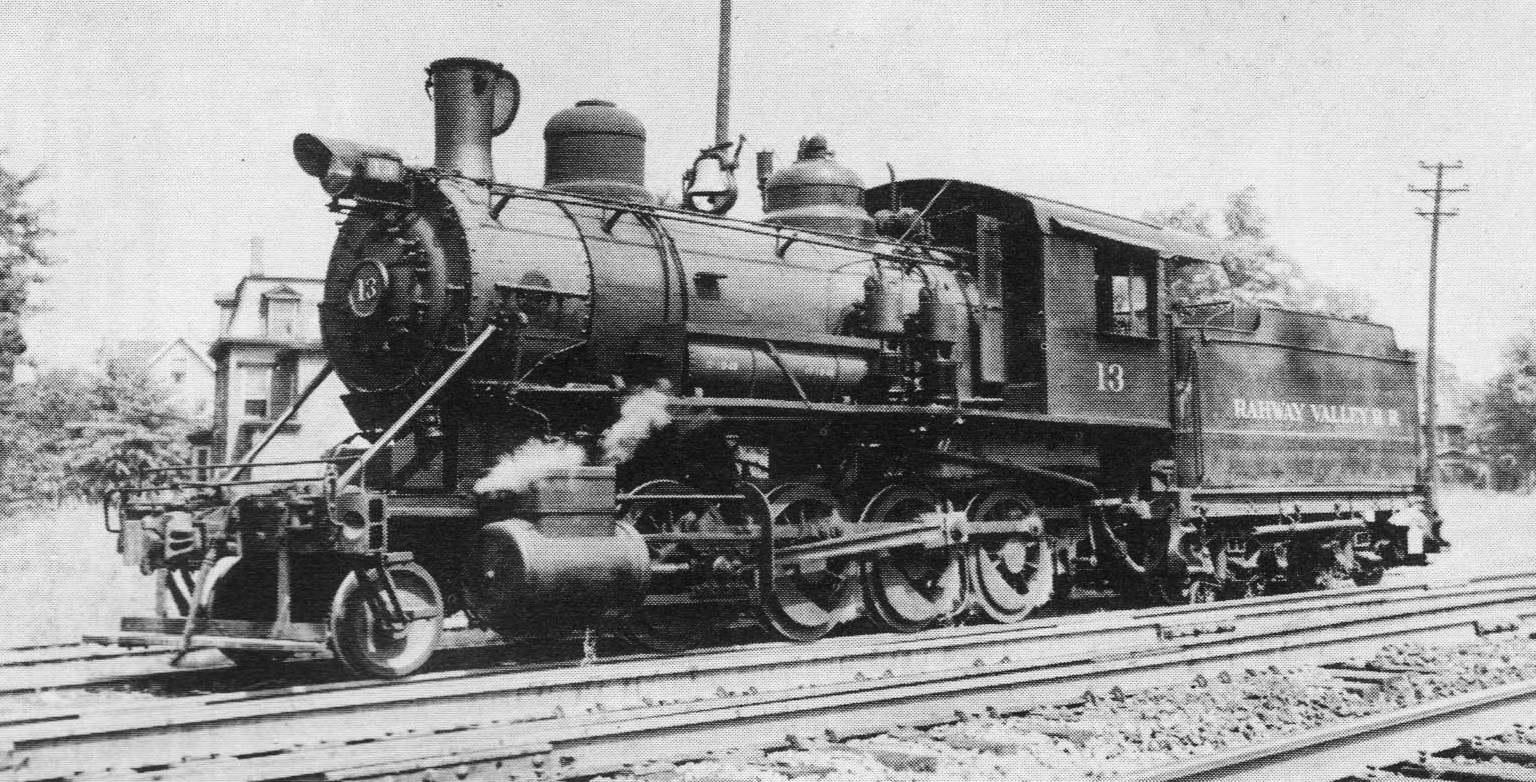 | |
#13 is seen here at the Lehigh Valley
interchange yard in Roselle Park in the days when it extended all
the way to Chestnut Street. In later years the interchange yard was
cut back to just short of Locust Street. | |
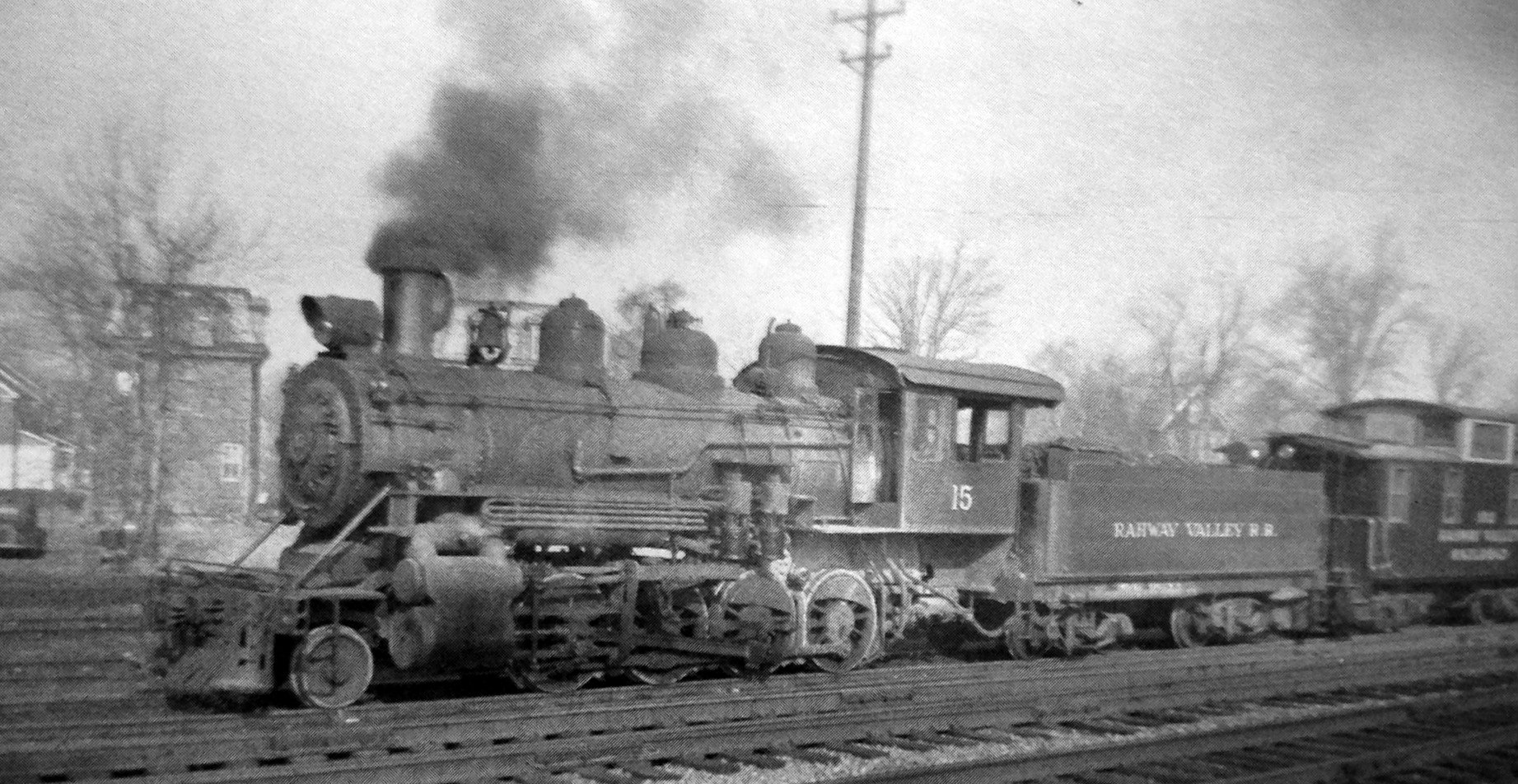 | |
#15 and Caboose 102 are seen here at the
original RV/LV interchange at Roselle Park. The two tracks in the
foreground are the mainline tracks of the Lehigh Valley. Today, the
old Lehigh Line is elevated and the former interchange is the
parking lot of the present day Roselle Park Station which was
constructed as part of the Aldene Plan. 1/19/1951.
Collection of Thurlow C. Haunton,
Jr. |
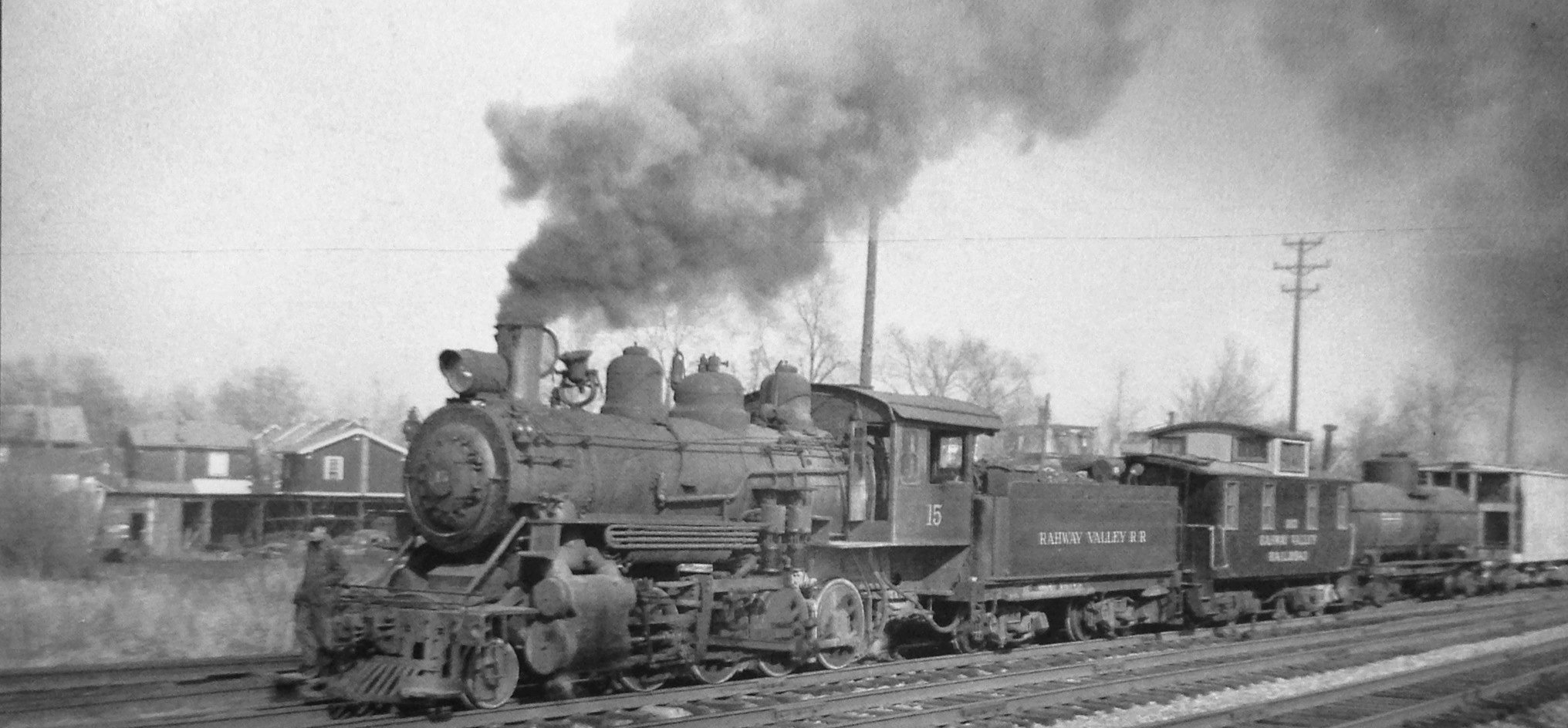 |
|
#15 and Caboose 102 have made their pickup at
the RV/LV interchange at Roselle Park and begin their journey
towards Kenilworth. The two tracks on the far right are those of the
LV's mainline. 1/19/1951.
Collection of Thurlow C. Haunton,
Jr. | |
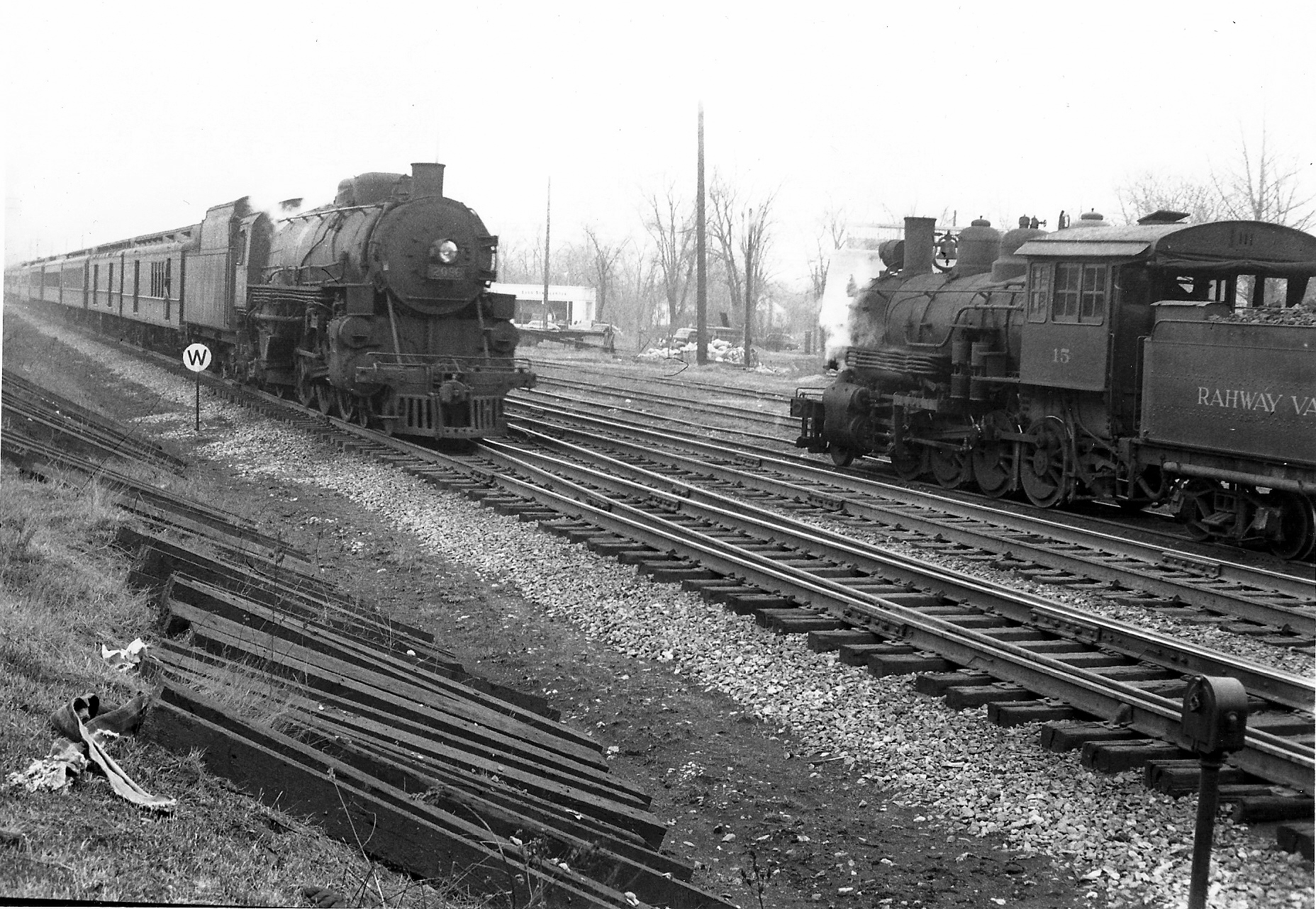 |
A Lehigh Valley
Passenger Train meets the Rahway Valley.
Collection of
Jeffrey J. Jargosch. Photo repair by Michael
Kaplonski. |
|
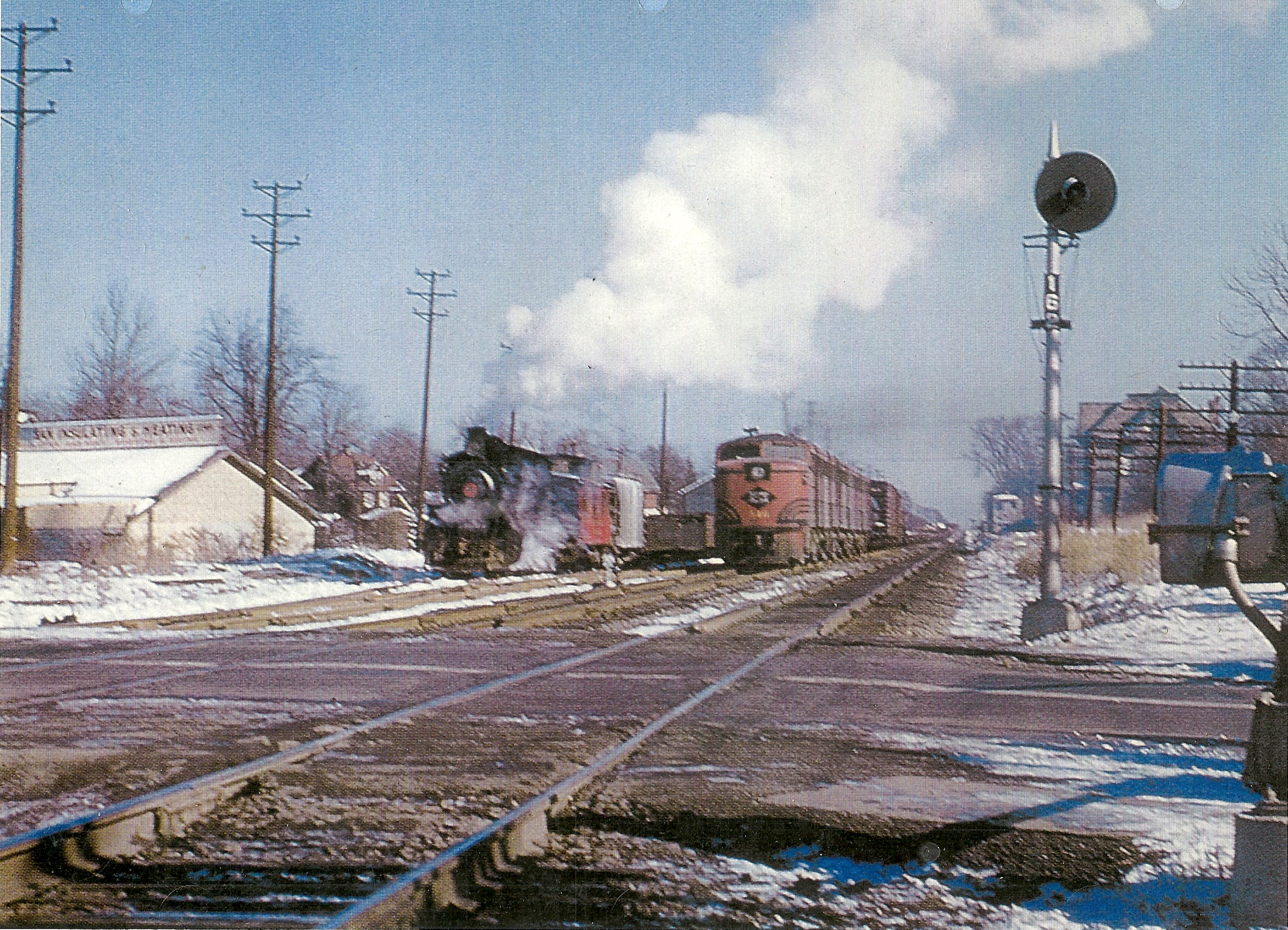
|
|
#15 and Caboose 102 meet a Lehigh Valley
Railroad ALCo A-B-B-A set at the interchange in Roselle Park on this
cold winter's day. The street in the foreground is Locust Street.
The original Roselle Park Station can be seen on the far right. The
sign on the building at the far left reads "Suburban Insulating
& Heating Corp." March 1952.
Photo taken by Dr. L. Leggett. Collection of
Jeff Jargosch.
|
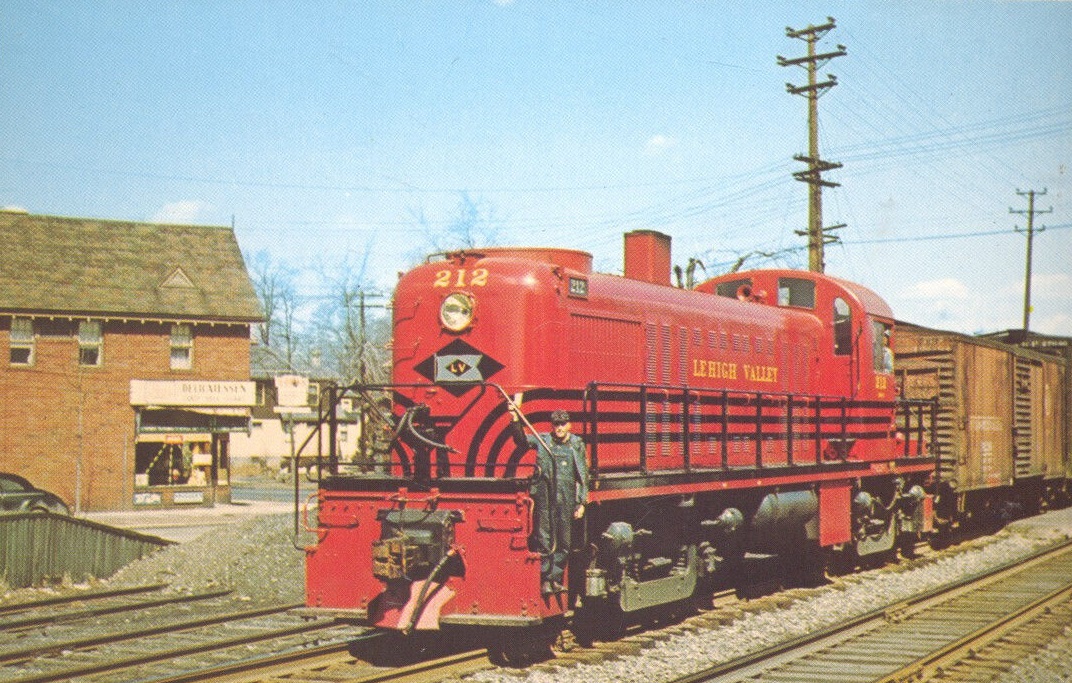 |
|
Here we see LV ALCo RS-3 #212 heading westbound,
having just crossed Chestnut Street. The two tracks on the far left
are the RV/LV interchange tracks, which terminate under the ballast
pile. Note the difference in the size of tracks between the
interchange and the mainline. |
LEHIGH VALLEY
RAILROAD REPORTS CONCERNING THE RAHWAY VALLEY
RAILROAD |
|
Name of Report |
Date |
Link |
|
Statement showing traffic delivered to and
received from the Rahway Valley R.R. Co. at Roselle Park, N.J.
for the years 1924 to 1928
inclusive. |
|
1924-1928 |
Link |
| Statement showing the names of principal
industries located on the Rahway Valley Railroad and the
number of cars which the Lehigh Valley R.R. delivered to and
received from them in the month of June
1929. | |
June
1929 |
Link |
|
|
Post Aldene
Plan |
|
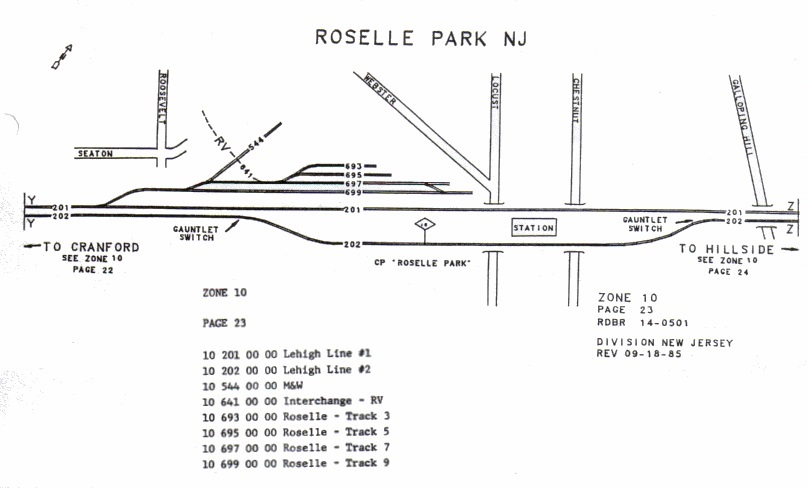 | |
This map shows the
RV/LV interchange yard as it would appear after the Aldene Plan
was implemented. The yard, previously between Locust and Chestnut
Streets, would be moved to the west of Locust Street. The LV
mainline is to be elevated and the grade crossings are all to
be eliminated. A new passenger station will be constructed
between the two tracks of the LV mainline with a gaunlet switch to
be installed on Track #2.Collection of Steve
Lynch. |
|
The
Aldene Planwas implemented
on May 1, 1967. A connection was forged between the
Central Railroad of New
Jersey and
Lehigh Valley Railroad at
Aldene. This was done to reduce costs for the ailing CNJ, by
allowing them to close their
Communipaw Terminal in
Jersey City. All CNJ passenger trains were then directed over the LV
to Newark Penn Station.
There were
several issues with this plan however. The LV mainline between
Aldene and Newark had several grade crossings. The increased rail
traffic from the CNJ passenger trains would have wreaked havoc at
these busy grade crossings. So, as part of the Aldene Plan the LV
mainline was elevated so that all grade crossings between Aldene and
Newark would be eliminated.
This planned
elevation of the LV main would affect the LV/RV interchange. The
main interchange yard was located between Locust and Chestnut
Streets. The new plan called for an interchange to be developed west
of Locust Street; all interchange tracks east of Locust Street
would be removed.
This new,
small but adequate, interchange yard consisted of four tracks.
A connecting track, on the east end of the yard, would go up to
connect with the newly elevated LV mainline. (See the interchange
yard map above).
The LV/RV
interchange remained vital to the Rahway Valley Railroad, eventually
capturing a reported 88% of the RVRR's interchange traffic. Conrail
was formed in 1976 which merged the Rahway Valley's three connecting
railroads, the Erie-Lackawanna (former DL&W), the CNJ, and LV,
among others, into one company. This, in effect, gave the Rahway
Valley only a single interchange partner, with connections in three
seperate locations.
The former
LV/RV interchange became the preferred connection with the newly
formed Conrail.
Bernie
Cahill even obtained federal funding to
upgrade this yard to heavier rail in 1979. The line between
Kenilworth and the former LV/RV interchange became the most well
maintained trackage on the entire Rahway Valley.
The
Delaware Otsego Corporation
took over the operations of the Rahway Valley in April, 1986,
eventually purchasing the railroad that December. The DO also
operated the Staten Island Railroad which it accessed via
Cranford
Junction. In an effort to consolidate operations
and cut costs, the DO switched its main Rahway Valley interchange
point to the old CNJ/RV juncture at
Aldene.This allowed the DO to utilize only one crew to operate the
Staten Island and Rahway Valley, with a single train called 'RV-1.'
The former LV/RV interchange, now unused, was closed in April of
1988, with the interchange yard eventually being torn up. |
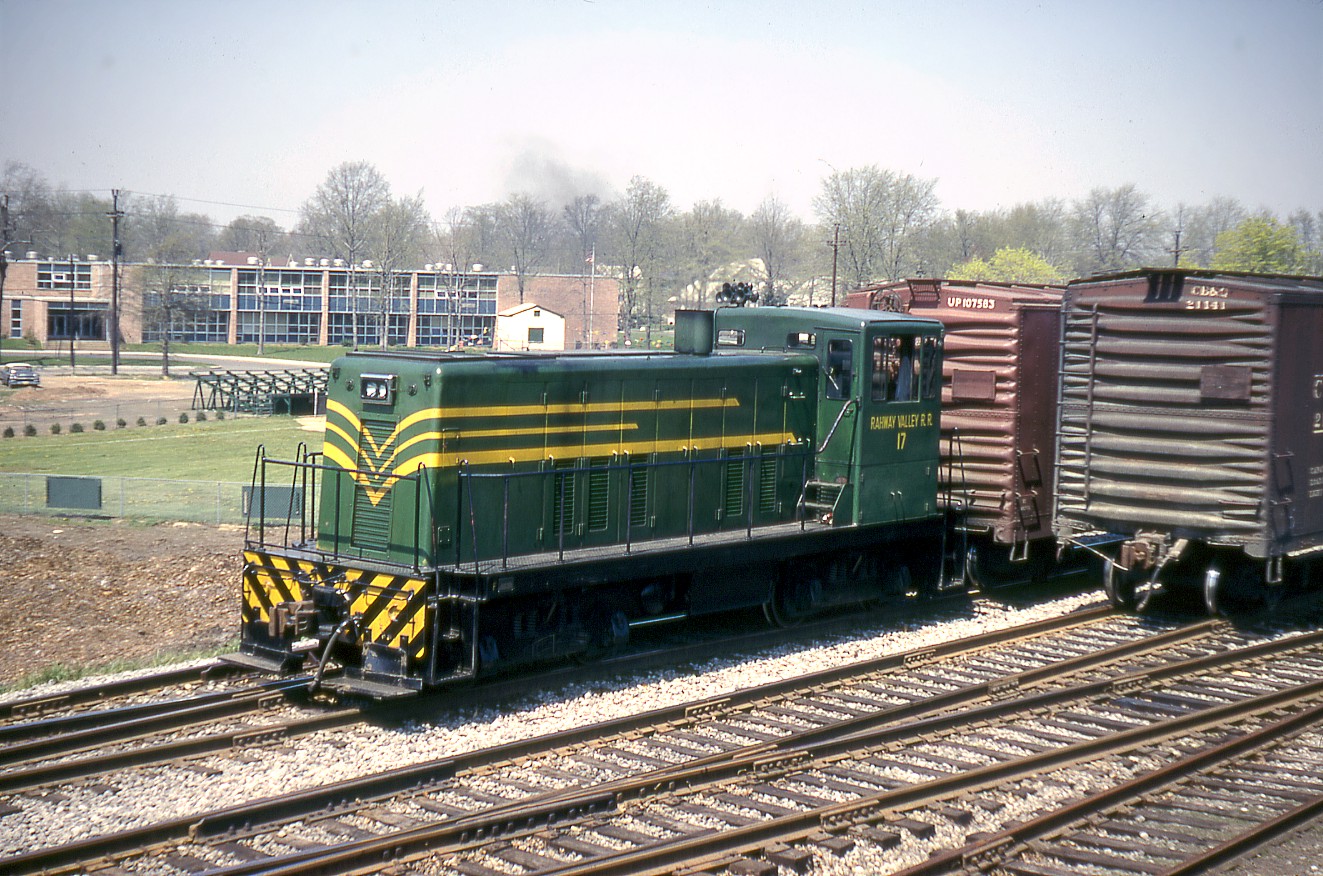 |
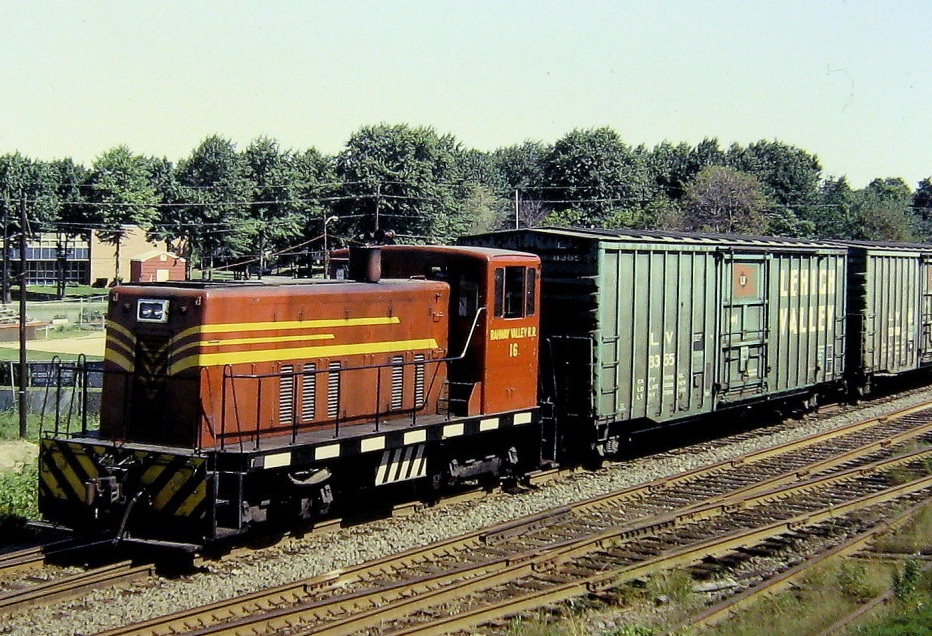 |
|
#17
switches cars at the Lehigh Valley interchange. Note the Roselle
Park High School in the background. 6/1967. Collection of Paul Carpenito. |
#16 moves a pair of Lehigh Valley boxcars around
the interchange yard
in this
view. The Roselle Park High School can be seen on the
left.
8/28/1975
. | |
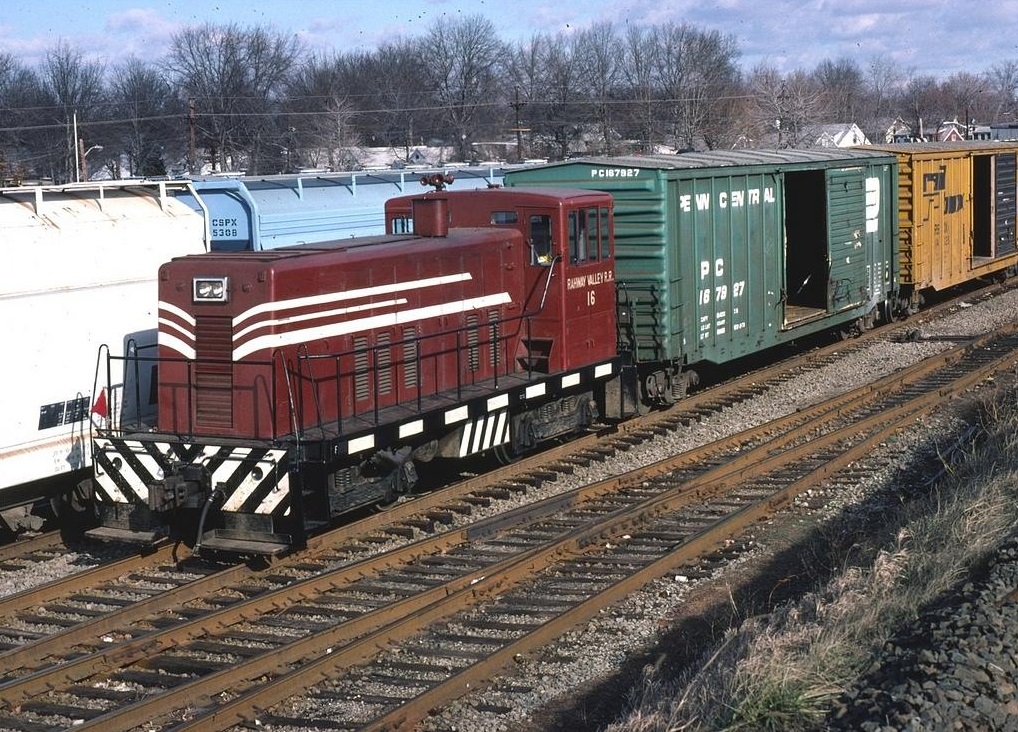 |
 |
|
#16
works the Conrail (former Lehigh Valley) interchange yard in this
1978 view, taken from the elevated LV mainline.Photo taken by Carl Perelman. |
#16 is seen here
rolling out of the Conrail (former Lehigh Valley) interchange yard
and begins her journey towards Kenilworth. The track in the
foreground connected to Conrail's elevated Lehigh Line.
11/1/1978.
Photo taken by Carl
Perelman. |
 |
 |
|
#16 is seen here
switching cars at the Conrail (former Lehigh Valley) interchange.
The elevated Lehigh Line can be seen in the background, behind #16.Photo taken by Paul Carpenito. |
#16 switching the old Lehigh Valley interchange,
now Conrail, in this early 1980s view. The old Lehigh line is the
elevated embankment on the right. Note the updated track and the Rahway
Valley's bright red box cars on the left, another Cahill
move. | |
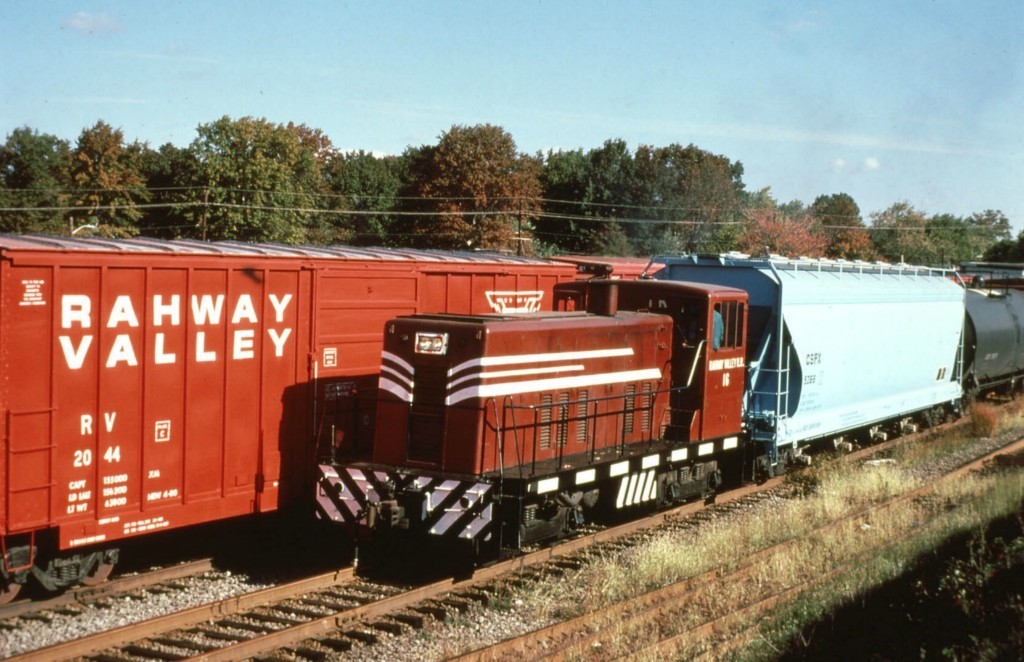 |
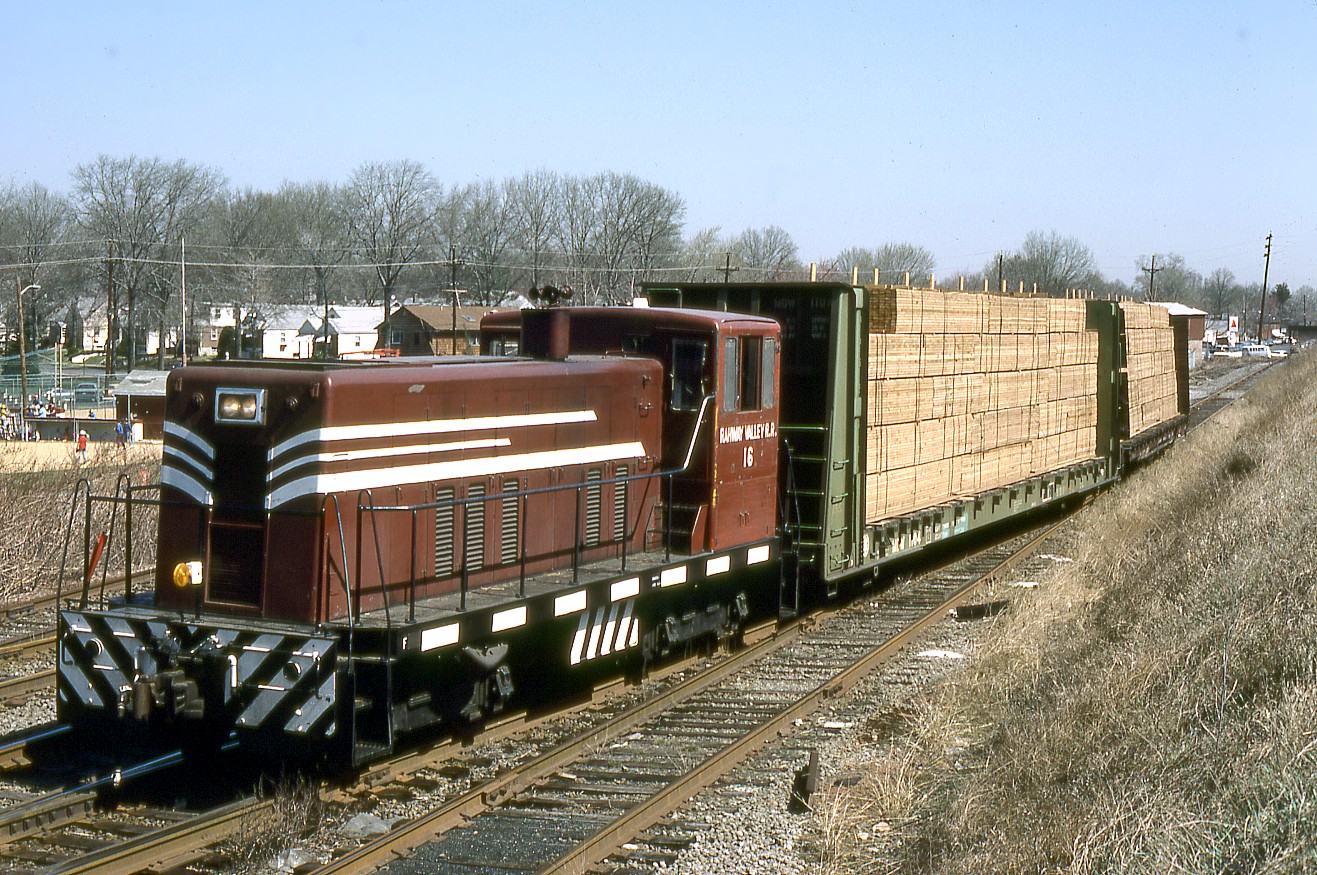 | |
#16 switching the Conrail interchange on the old
Lehigh Line in Roselle
Park. |
#16 disembarks from
the old Lehigh Valley interchange with two carloads of lumber,
probably bound for Ply-Gem or Jaeger Lumber in Union. April 1988.Photo by Carl Perelman. |
|
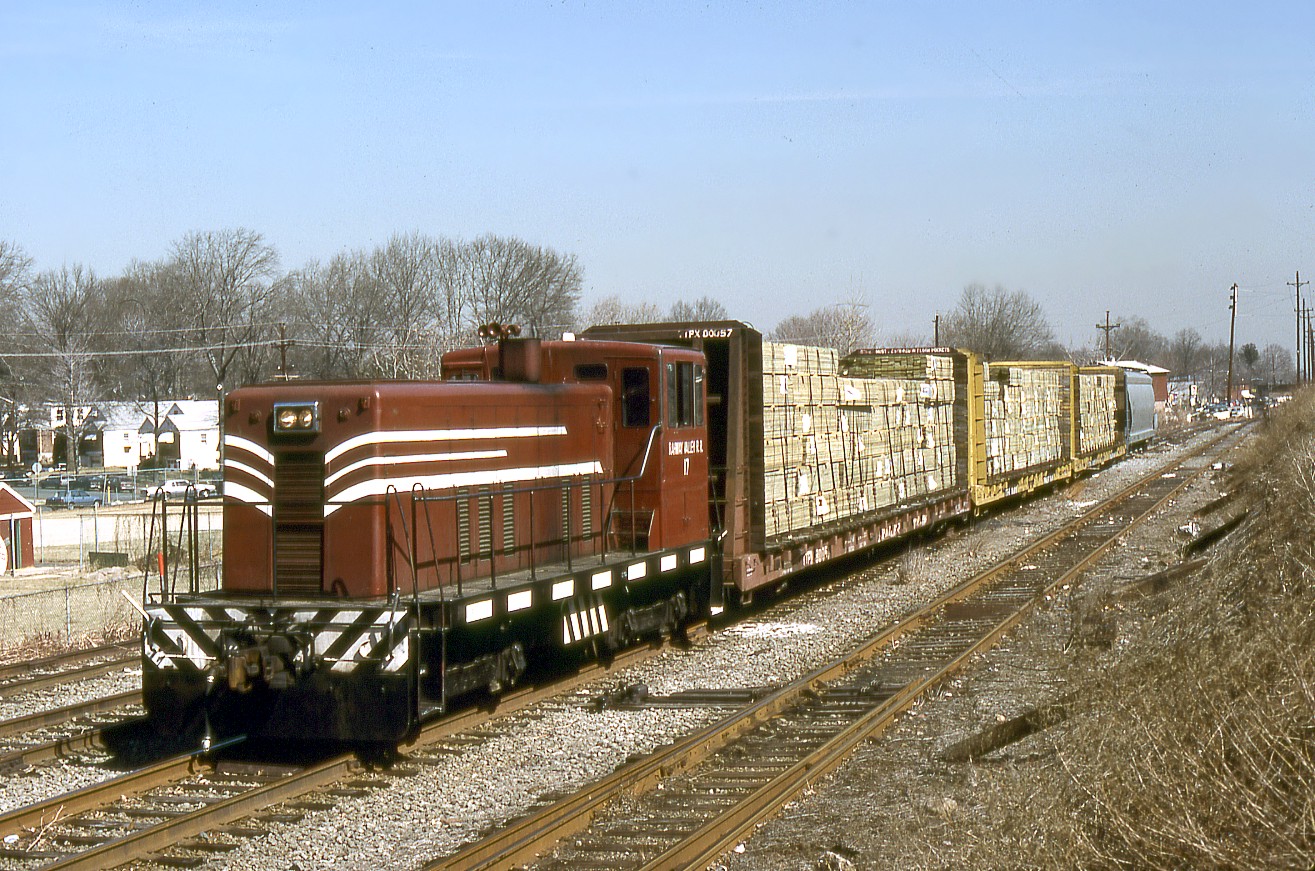 |
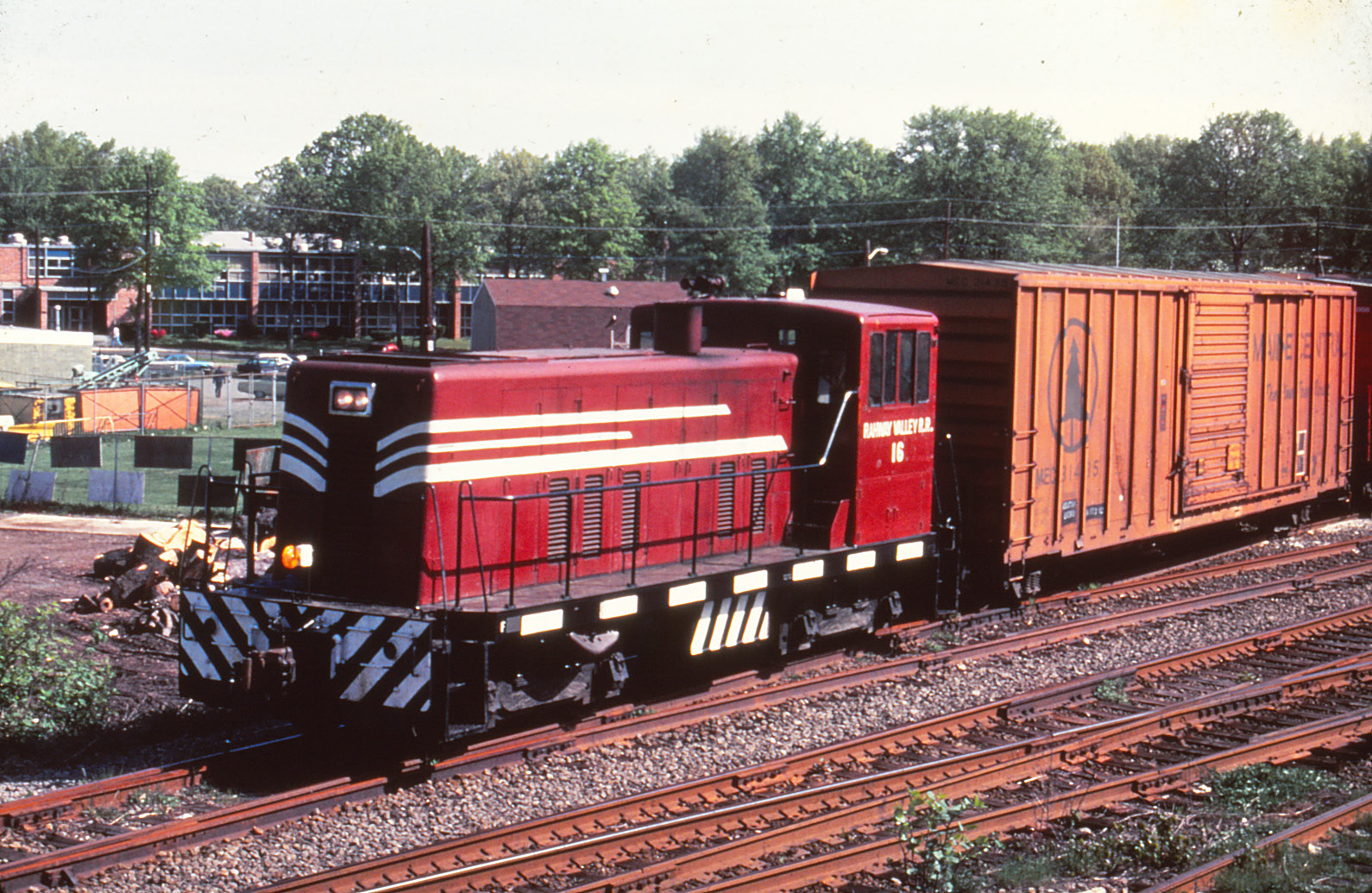 |
|
In a similar scenario, #17 leaves the
interchange with Conrail with three carloads of lumber and a hopper
most likely filled with plastics for Monsanto Corp. in Kenilworth.
March 1988.
Photo by Carl
Perelman. |
Another view of #16
switching the junction in the 1980's. Roselle Park High School can
be seen in the upper left hand corner of the
photo. |
|
.jpg) |
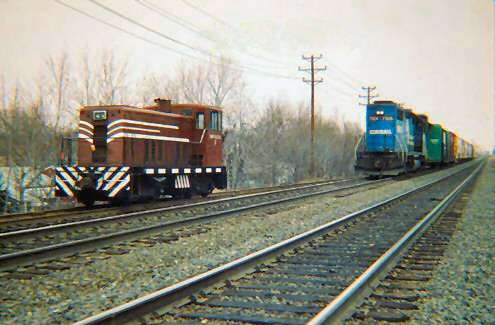 |
#17 at the ex-Lehigh Valley interchange.
7/21/1982.
Collection of Donald
Albertson. |
The Rahway Valley meets Conrail on the old two
track Lehigh Line. |
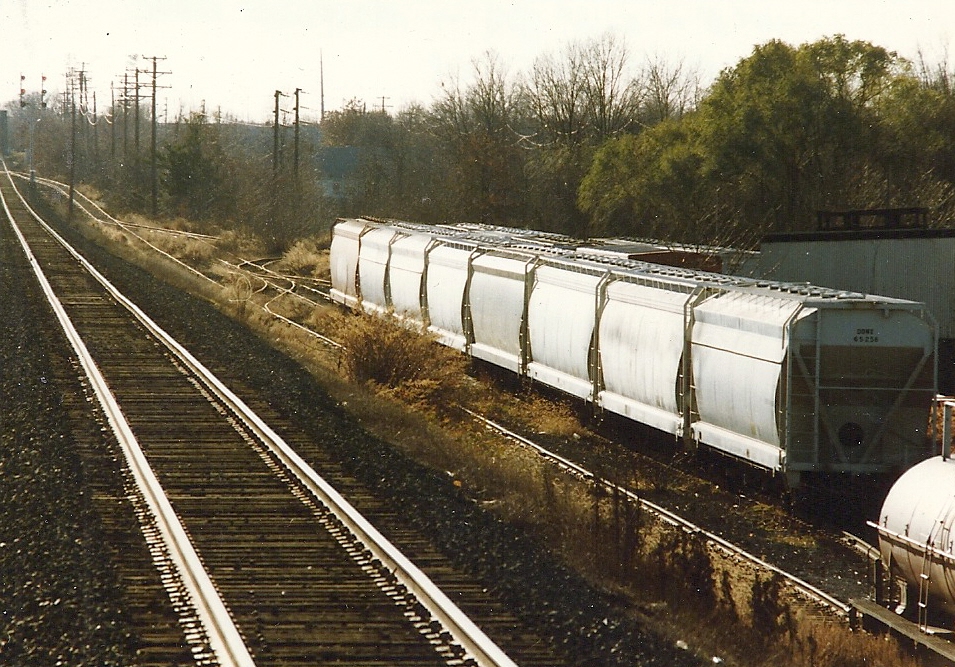 |
|
Looking into the
interchange yard from atop Conrail's Lehigh Line (ex-Lehigh Valley
RR). Photo taken by Jeff
Jargosch. |
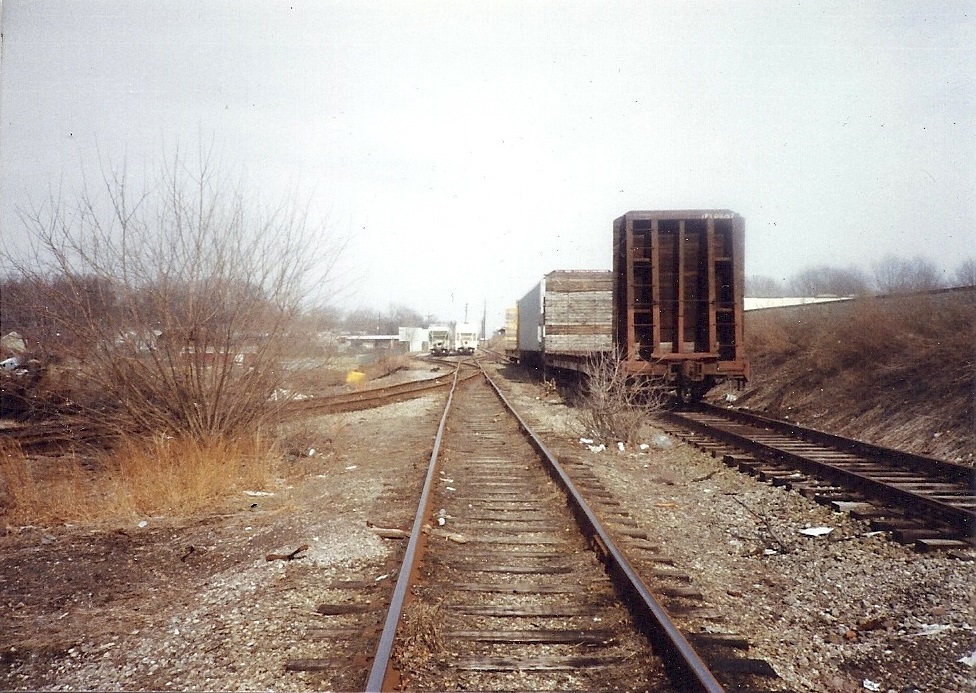 |
|
Looking northeast
at the RV/Conrail interchange. Photo taken by Jeff
Jargosch. |
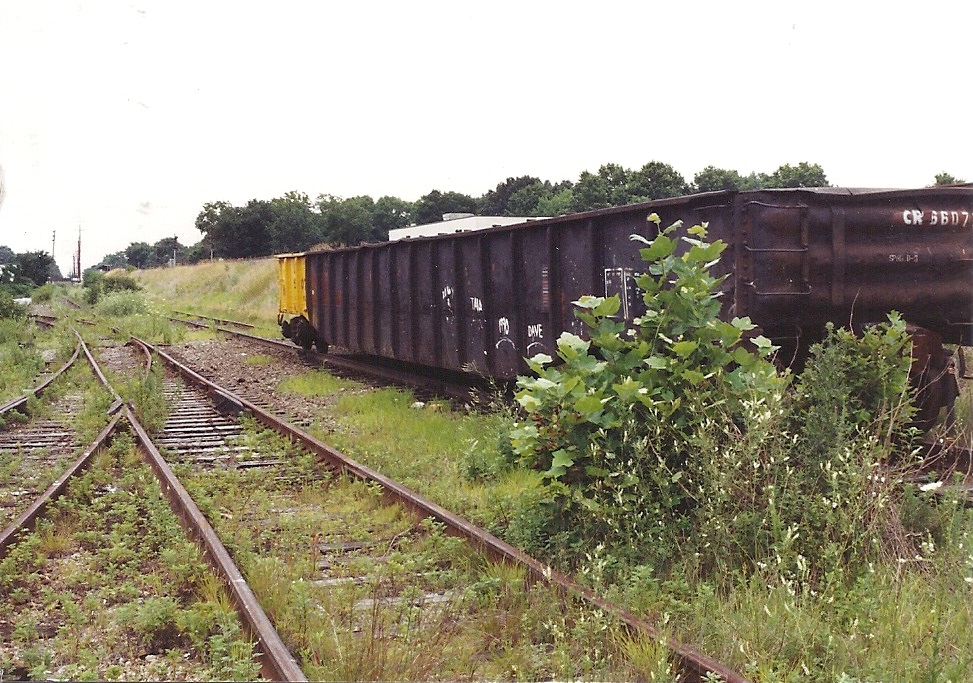 |
|
The RV/Conrail
interchange in 1990. The interchange itself had been closed since
1990, but the rails remained in place. Conrail had this lone gondola
here, the interchange yard was their property after all.
Photo taken by Peter Thornton, courtesy of Don
Maxton. |
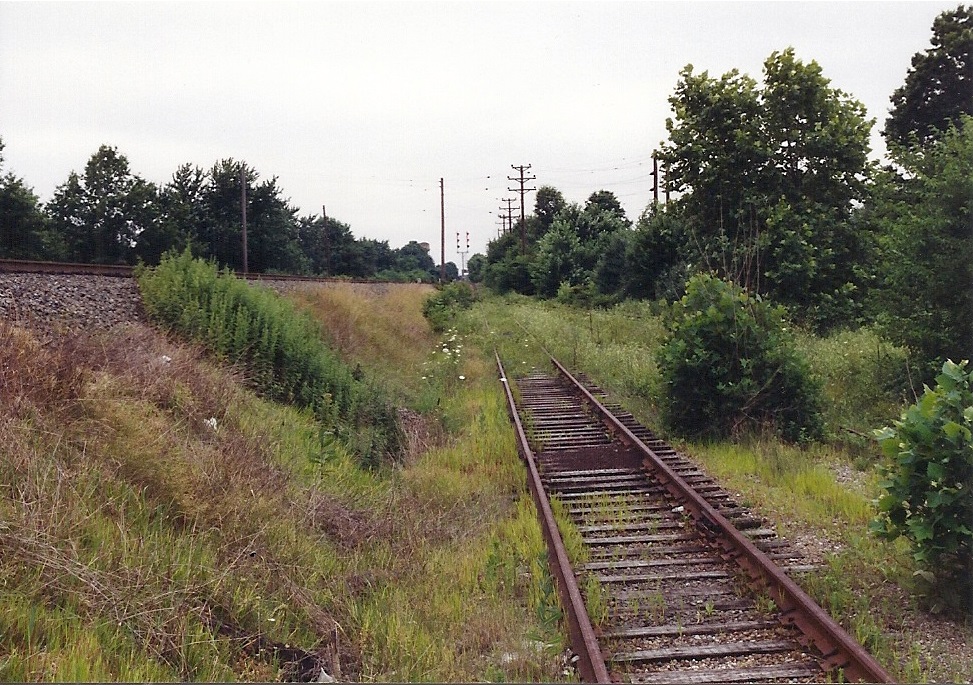 |
|
Looking
southwest. Photo taken by Peter Thornton,
courtesy of Don
Maxton. |
|